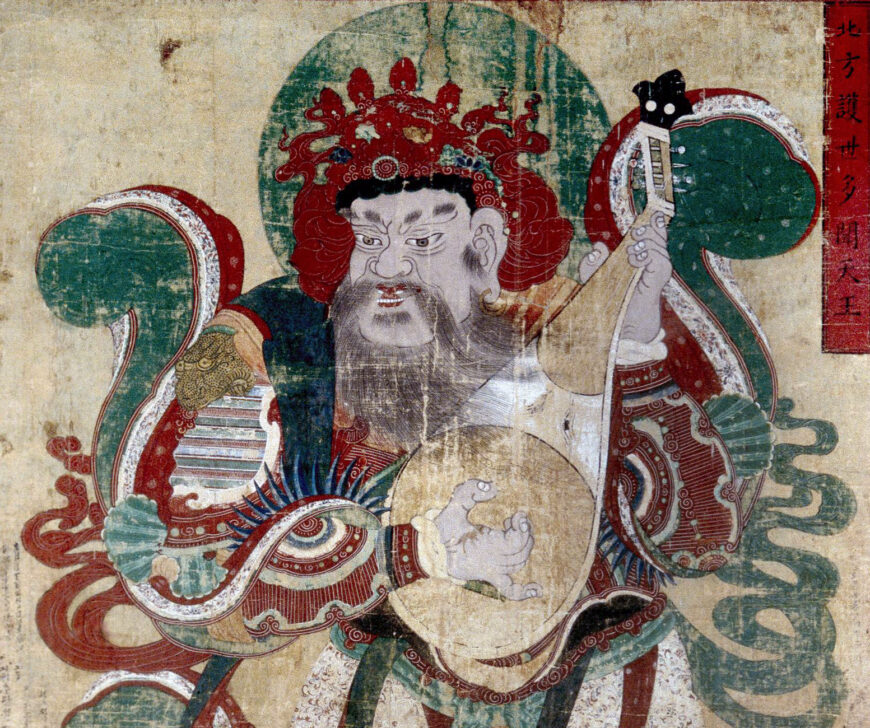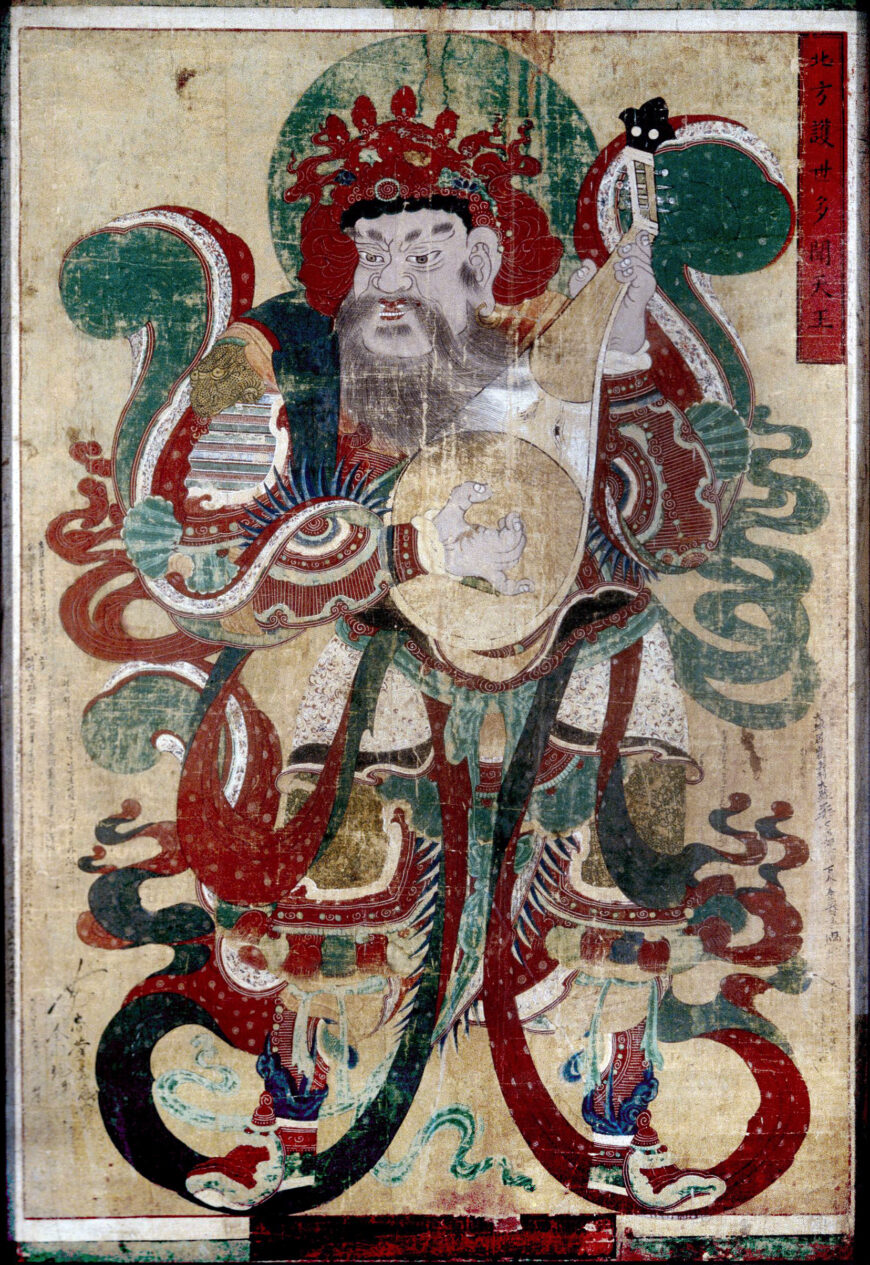
Detail, Dhratarastra, Guardian King of the East, late 18th–early 19th century (Choson/Joseon dynasty), painting on hemp cloth, 207 x 301 cm, probably from Taegu, Kyongsang province, Korea (© The Trustees of the British Museum)
After the fall of the Koryo/Goryeo dynasty in 1392, the new Choson/Joseon dynasty became a strict Confucian state that oppressed Buddhism. Buddhism was blamed for corruption at the royal court and in the monasteries. Buddhist monks no longer held the highly esteemed position, and it increasingly became the religion observed by women. However, the Buddhist monks gained more respect after the Japanese invasion of 1592, when they successfully organized armies and fought against the invaders.
This painting is from late in the Choson period, when Buddhism became more active and less oppressed.

Dhratarastra, Guardian King of the East, late 18th–early 19th century (Choson/Joseon dynasty), painting on hemp cloth, 207 x 301 cm, probably from Taegu, Kyongsang province, Korea (© The Trustees of the British Museum)
The four guardians of the cardinal points (north, east, south, and west) acted as the defenders of Buddhism and are found in paintings and sculpture at the entrance to temples. Although the inscription at top right indicates that the figure is the Guardian King of the North, the lute that he carries is in fact the attribute of Dhratarastra, Guardian King of the East. The huge size of the canvas, the dynamic and decorative lines, and the combination of mineral colors are typical of Buddhist paintings from Korea. The malachite green is characteristic of eighteenth-century Korean Buddhist paintings.
© The Trustees of the British Museum
Additional resources
J. Portal, Korea—art and archaeology (London: The British Museum Press, 2000).
W. Zwalf (ed.), Buddhism: art and faith (London: The British Museum Press, 1985).

